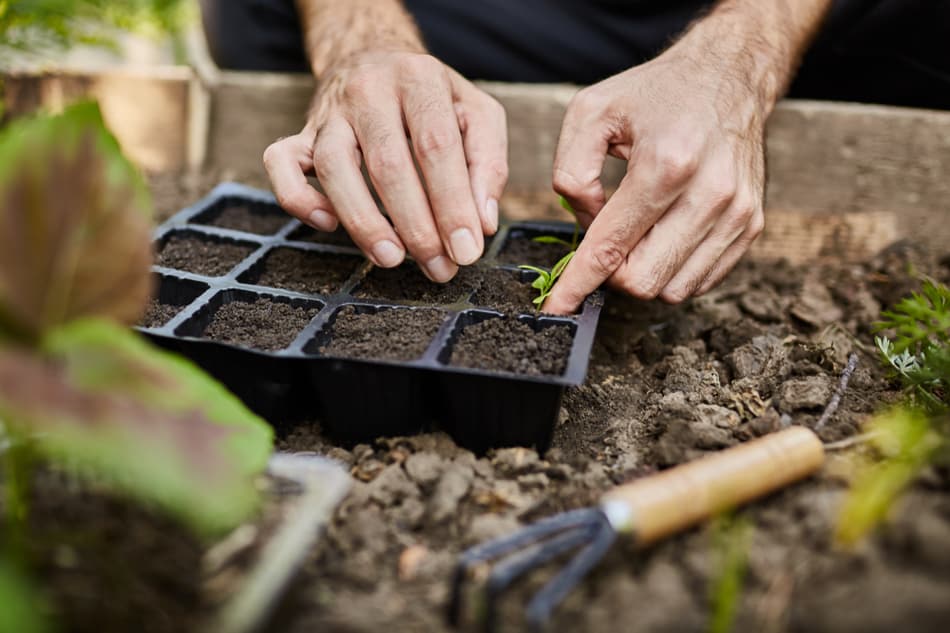When you are gardening, it is important to know the difference between microgreen seeds and regular seeds. Microgreens are a type of vegetable that is harvested when the plant is very young. They are smaller than regular vegetables, and they have a more intense flavor. If you are looking for a way to add some extra nutrition to your diet, then you should consider growing microgreens!
Microgreen seeds are regular seeds, but they are smaller in size. This makes them easier to germinate and grow. Additionally, microgreen seeds have a higher germination rate than regular seeds. This means that you’ll get more plants from a packet of microgreen seeds than from a packet of regular seeds.
So, if you’re looking to start a microgreens garden, be sure to purchase microgreen seeds. You won’t be disappointed! Let’s talk more.
In this article, I will discuss the differences between microgreens and regular seeds, and we will provide some tips for growing your microgreens at home!
Regular seeds
Regular seeds are the type that you would typically find in a packet at the store. They’re larger than microgreen seeds and have a lower germination rate. This means that you’ll get fewer plants from a packet of regular seeds than from a packet of microgreen seeds.
While regular seeds will grow into healthy plants, they may not be as easy to grow as microgreens. If you’re looking for an easy gardening project, we recommend starting with microgreen seeds.
What Are Microgreen Seeds?
Microgreen seeds are basically the same as regular ones, but they’re smaller. This makes them easier to germinate and grow. Additionally, microgreen seeds have a higher germination rate than regular seeds.
There are many benefits of growing microgreens. They are nutritious and delicious, but they’re also easy to grow. Microgreens are perfect for people who want to enjoy fresh, homegrown greens all year long without dealing with a full-sized garden.
What’s The Difference Between Microgreen Seeds And Regular Seeds?
There are two main types: regular and microgreen. Both have their own distinct advantages and disadvantages.
Regular seeds are typically larger and have a more robust shell. This makes them easier to handle and less likely to be damaged during planting. They also tend to germinate more quickly than microgreen seeds. However, regular seeds can be more difficult to find, and they often cost more than their smaller counterparts.

Microgreen seeds, on the other hand, are much smaller and often have a thinner shell. This makes them more delicate and more likely to be damaged during planting. They also tend to germinate more slowly than regular seeds. However, microgreen seeds can be easier to find, and they often cost less than regular seeds. In addition, microgreen seeds typically produce healthier plants with higher yields.
So, which type of seed is right for you? That depends on your needs and preferences. If you’re looking for an easy-to-find, low-cost seed that will produce healthy plants with high yields, then microgreen seeds are a good option.
Growing regular seeds into microgreens is easy and can be done without buying any additional gardening supplies. However, if you want high-quality vegetables with an assurance of getting them growing quickly, then it’s best to use your own personal grown seed, instead of purchasing ones from store shelves or vendors who may sell mixed packs (which could contain both types). The process will remain pretty much the same.
Still, these days most people prefer using “microgreen” varieties because they germinate faster than regular-sized planting pots allowing growers more time before harvest.
Why are Microgreen Seeds Special?
Microgreen seeds are different from other types of seeds in a few key ways:
- They are much smaller, making them easier to handle and sow.
- They have a higher germination rate, meaning more of them will grow into healthy plants.
- Microgreen seeds are specifically bred to produce strong, vibrant greens that are packed with nutrients.
This makes them the perfect choice for anyone looking to add a nutritious punch to their diet. Whether you use them to top off a salad or add some extra nutrition to your smoothie, microgreen seeds are a great way to get the most out of your food.
Types Of Microgreen Seeds
Microgreens are a type of vegetable that is harvested when the plant is young, when typically it is around 2-3 inches tall. They are grown from a variety of seeds, including mustard, radish, and broccoli. While microgreens are often used as a garnish or as a way to add color to a dish, they can also be eaten on their own as a salad or as part of another dish.

There are two main types of microgreens: leafy greens and cruciferous greens. Leafy greens, such as spinach and kale, have thin leaves and a delicate flavor. Cruciferous greens, such as cabbage and mustard, have thicker leaves and a more robust flavor. Microgreens can also be classified based on their color, such as green, red, or purple.
While microgreens are typically eaten raw, they can also be cooked. When cooking microgreens, it is important to use low heat so that the delicate leaves do not get wilted or burned. Microgreens can be stir-fried, sauteed, or even used in soup or stew. No matter how you eat them, microgreens are a nutritious way to add flavor.
Final Words
If you are looking for a way to add some extra nutrition to your diet, then you should consider growing microgreens! Microgreen seeds are regular seeds, but they are smaller in size. This makes them easier to germinate and grow. Additionally, microgreen seeds have a higher germination rate than regular seeds. This means you can harvest more vegetables from each batch of plants. Give microgreens a try today and see how much of a difference they can make in your diet!
Related Content
Do Microgreens Regrow After Cutting?
Can You Juice Microgreens?
Can Microgreens Make You Sick?

